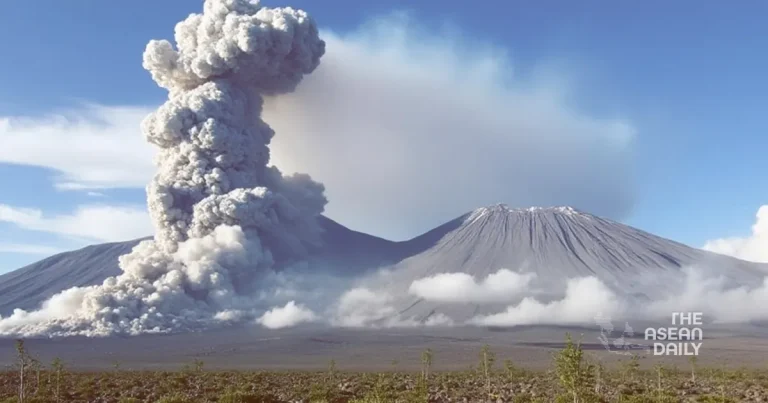20-11-2024 (JAKARTA) Mount Lewotobi’s latest eruption has triggered fresh concerns over air quality in Indonesia’s East Nusa Tenggara province, as the active volcano discharged a massive ash column reaching heights of three kilometres into the atmosphere.
The Wednesday eruption marked an intensification of volcanic activity that began earlier this month, prompting authorities to maintain stringent safety measures while managing the welfare of thousands of displaced residents.
The Volcanology and Geological Disaster Mitigation Centre reported that the thick, grey ash cloud drifted westward and southwestward from the crater. Despite lowering the aviation alert to orange status, officials have maintained a no-fly zone for aircraft below five kilometres in the vicinity of the volcano.
Speaking to reporters, Richard Felt of the provincial disaster management agency highlighted the growing health concerns among local communities. “The persistent eruptions since November 4 have led to a marked deterioration in air quality, with several residents reporting respiratory difficulties,” he said.
In response to the crisis, authorities have implemented comprehensive support measures at evacuation centres, where approximately 12,000 displaced individuals are currently sheltering. These facilities have been equipped with essential supplies, medical stations, and protective equipment, including face masks to combat the effects of poor air quality.
The disaster management team is maintaining vigilance against potential secondary hazards, particularly the risk of lahar flows—dangerous mixtures of volcanic debris and water—during periods of heavy rainfall. Officials have mapped high-risk zones and issued warnings to local residents to avoid these areas.
Mount Lewotobi, which stands at 1,584 metres above sea level, is among Indonesia’s 127 active volcanoes.




